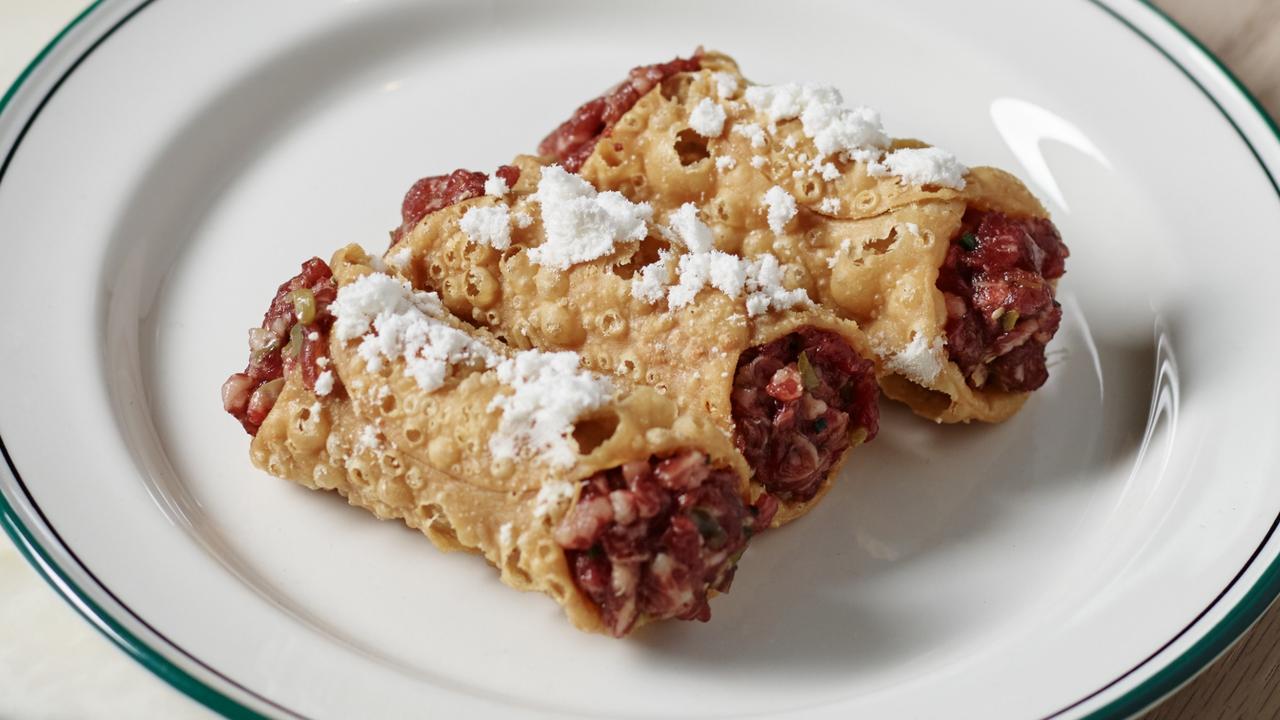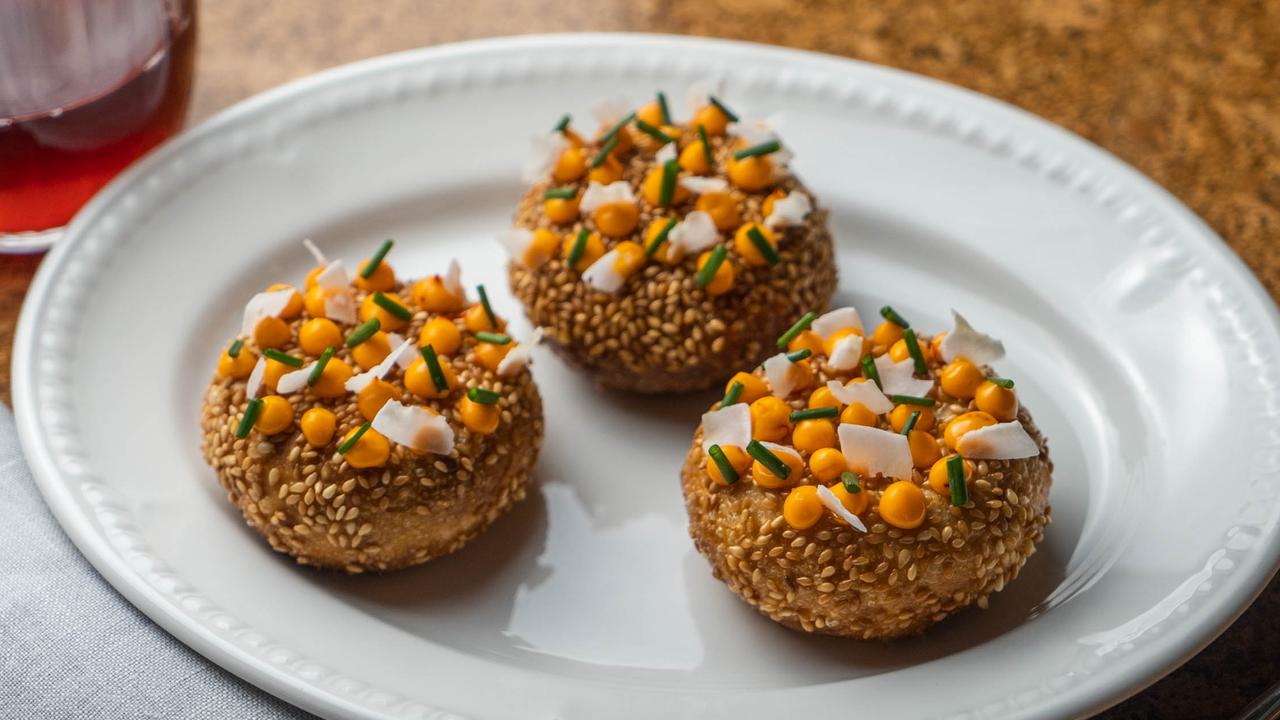How the humble chicken parma became synonymous with Aussie cuisine
IF there’s one thing Melburnians are passionate about, it’s their parmas. This is how the humble crumbed chicken dinner became one of Melbourne’s biggest sellers.
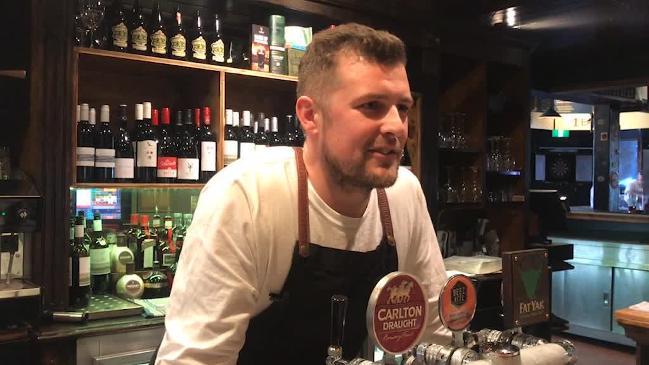
delicious.100
Don't miss out on the headlines from delicious.100. Followed categories will be added to My News.
IF you had to pick one food that was synonymous with Aussie pub culture, it would be the chicken parmigiana. Sure; steaks, burgers and Sunday roasts have their place, but there is something about a good old pub parma (or, depending on where you’re from, parmi or parmy) that trumps, well, pretty much everything else on the menu.
As they say, nothing beats an Italo-Aussie classic.
But, to quote Notting Hill: “It’s not really a classic, is it?”
While the history of this quintessentially Aussie dish is hazy at best, the widely accepted belief is that it’s of Italian origin — hence why you’ll find it on menus across many of the city’s bustling Italian establishments.
And we’re not talking just talking popularised chain restaurants the likes of La Porchetta or Sofia. Even at top-rated St Kilda institution Café Di Stasio you’ll find dishes like ‘Cotoletta di Pollo’ — which is just a fancy way of saying crumbed chicken topped with fontina cheese and tomato.
But ask any Italian chef and they’ll tell you our much-loved chicken parmigiana is not something you’ll find on any menu in Italy.
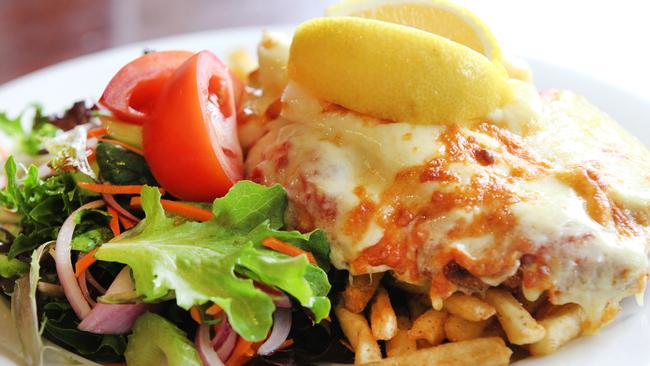
So how did this Italo-inspired smash hit come to be an Aussie staple?
Fabio Angele, owner and managing director of one of Melbourne’s original Italian eateries — Brunetti Cafe — says it’s likely that the Aussie chicken parma is a bastardised version of a (debatably) southern Italian dish called parmigiana al la melanzane, or eggplant parmigiana.
This scrumptious recipe refers to a dish of fried eggplant that is layered with parmigiano cheese and tomato sauce, then baked.
MORE: IS INSTAGRAM KILLING THE HUMBLE PARMA?
“Eggplant parmigiana dates back to the late 17th, early 18th century,” he explains. “Eggplants came from the Middle East, through Spain and were introduced to Italy via Sicily — the same as tomatoes, which were native to Peru, as well as many exotic fruits and spices from when Sicily was occupied by the Moors.”
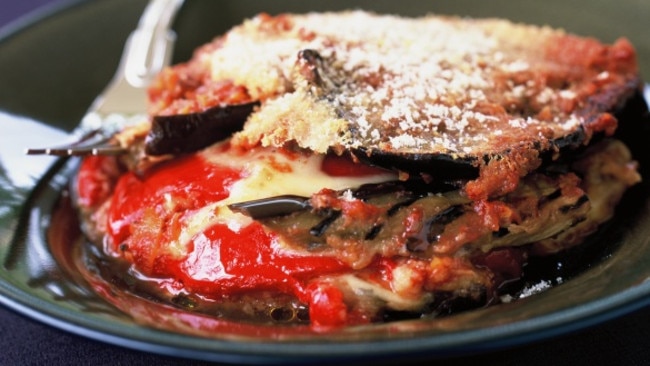
In Sicilian dialect, Fabio explains, the word parmigiana is derived from parmiciana, referring to the way wooden slats overlap on traditional Persian windows, which is similar to the layers of eggplant.
But the origins of this eggplant parmigiana, even in Italy, are widely disputed.
Some believe it originated in the northern region of Parma — after which the famous parmesan cheese used in its making was named. Others credit the Neapolitan region of Campagna with its creation, after culinary literature from the late 18th century saw the inclusion on mozzarella in the saucy recipe.
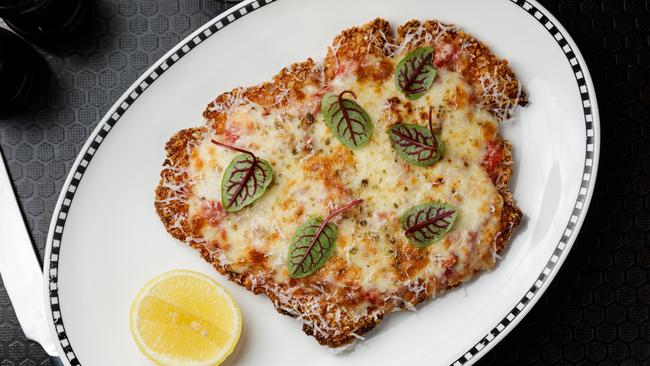
But what about Melbourne’s parma obsession?
Fast forward to modern-day Melbourne and this deliciously-adapted, albeit non-traditional dish is pretty much a national treasure.
You’ll be hard-pressed to find a pub menu in Melbourne on which the chicken parma does not star.
There are even bistros and restaurants dedicated to parmas topped with an array of obscure, alternative and Aussiefied ingredients. Pineapple on a parma, anyone?
MORE: MELBOURNE’S BIGGEST PARMA
Melissa Falson, executive chef at hospitality group Sand Hill Road, which owns and operates some of Melbourne’s most popular pub venues — including Garden State Hotel, Richmond Club Hotel, Prahran Hotel, Bridge Hotel and The Terminus Hotel — says other than the people, parmas are the “heart and soul” of their business.
“People come for comfort food, food they can relate to,” she says. “And that is the parma.
“Week in week out, it’s our top selling dish and at places like Richmond Club, we would easily in excess of 500 parmas a week.”
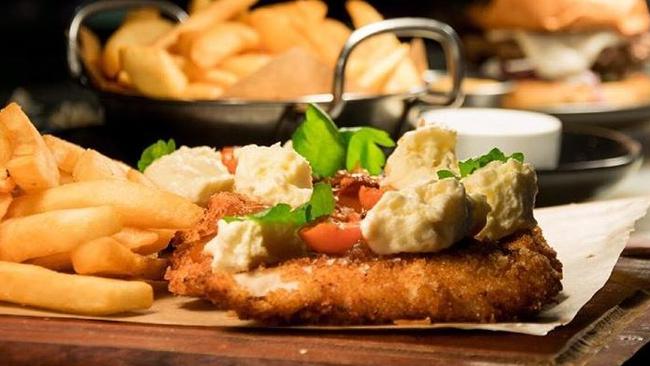
While the casual dining trend has seen a plethora of new venues dabbling in traditionally pub-only fare, Melissa says the strength of the pub — or public house — is that is a place where friends, family, colleagues can gather over a relaxed meal and cheeky tipple.
“When I started doing casual dining many moons ago — there were all the fine-dining and degustation restaurants, and people loved that. There wasn’t much competition in our market.
“These days you’ve got George Calombaris doing Jimmy Grants. Vue du Monde doing burgers. There’s Biggie Smalls and 8Bit …
“We do pubs. We reimagine them, reinvent them; but at the end of the day we are still a pub and parmas are part of that culture.
“To succeed in this business, you have to stay true to your roots. We’re all about the community and our people and we just want to do classic pub things, and do them well, and not try to compete with everybody.”
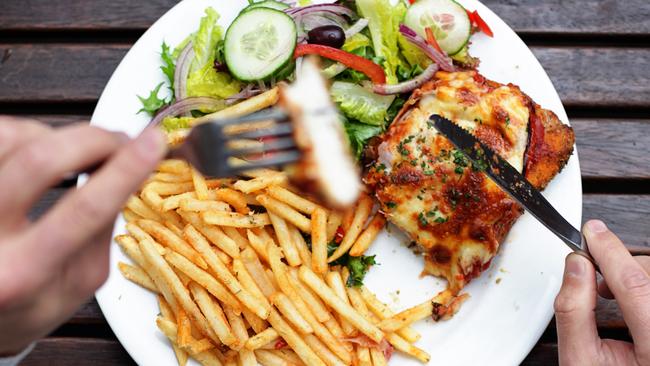
So what, exactly, makes a delicious parma?
“It has to have crispy crumbs and be well cooked, beautifully seasoned and the cheese needs to be well gratinised — you want a little bit of a crust,” Melissa says. “It also has to be off the chips — otherwise you get sweaty chips and nobody wants that. You shouldn’t have to move your food to eat it.”
She also weighs in on the correct way to ‘build’ you parma: ham then sauce then cheese (a sentiment with which my 86-year-old Italian grandmother would wholeheartedly agree).
And when it comes to pineapple, Melissa is definitely not in Canadian PM Justin Trudeau’s camp.
“Anything that’s not a classic is wrong,” she says with a laugh. “Don’t mess with a classic.”
WHO MAKES MELBOURNE’S BEST PARMA? LET US KNOW IN THE COMMENTS BELOW.

